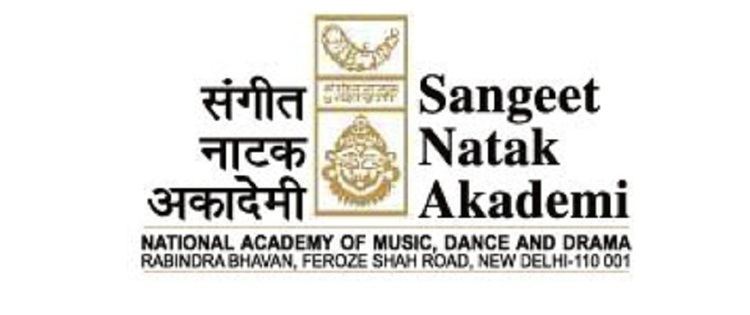Abbreviation SNA Website sangeetnatak.org | ||
 | ||
Formation May 31, 1952; 64 years ago (1952-05-31) Parent organisation Ministry of Culture, Government of India | ||
President presents sangeet natak akademi s fellowships sangeet natak akademi awards
Sangeet Natak Akademi (Devanāgarī: संगीत नाटक अकादेमी or The National Academy for Music, Dance and Drama in English) is the national level academy for performing arts set up by the Government of India.
Contents
- President presents sangeet natak akademi s fellowships sangeet natak akademi awards
- Dharohar sangeet natak akademi saaz aur andaaz
- History
- Functions
- The facilities
- The audio visual archive
- The library
- Gallery of musical instruments
- Documentation unit
- Sangeet Natak Akademi Award
- Sangeet Natak Akademi Fellowship Ratna Sadsya
- Ustad Bismillah Khan Yuva Puruskar
- Indian classical dances
- References
Dharohar sangeet natak akademi saaz aur andaaz
History
It was set up by the Indian education ministry on 31 May 1952 and became functional the following year, with the appointment of its first chairman, Dr. P. V. Rajamannar. Dr Rajendra Prasad, the first President of India, inaugurated it on 28 January 1953 in a special function held in the Parliament House. The academy's Fellowship and Award are considered very prestigious.
Functions
The academy functions as the apex body of the performing arts in the country to preserve and promote the vast cultural heritage of India expressed in music, dance and drama. It also works with governments and art academies in states and territories of the country.
SNA established several institutions over the years:
Centers:
In addition, the Akademi
The facilities
The academy is an important source of information and offers the following facilities.
The audio-visual archive
The academy's audio-visual archive has several audio/video tapes, photographs and films. It is the largest archive of its kind in the country and is extensively drawn upon for research on the performing arts of India.
The library
The academy maintains a reference library consisting of about 22,000 books.
Books on several subjects including Dance, Drama, Music, Theatre, Sociology, Folklore, Tribal Studies, Indian History and Culture, Indian Art, Religion and Epics, Mythology, Anthropology and Reference works such as Encyclopedias, Dictionaries, Yearbooks, Bibliographies, Indexes and Newspaper clippings about Academy Awards and eminent artistes in the field of performing arts, can be found here.
The library maintains data files on awardees and fellows of the academy since its inception (1953) and along with those on other eminent personalities of the field.
Gallery of musical instruments
The academy has a museum-cum-gallery of musical instruments in Rabindra Bhavan, New Delhi. There are more than 200 musical instruments on display here.
Documentation unit
It has a documentation unit that collects and records works of masters in the field of music, dance and theatre on audio and video to help researchers. The academy produces several in-house publications.
Sangeet Natak Akademi Award
The Sangeet Natak Akademi Award is the highest national recognition given to practicing artists, gurus and scholars. It carries a purse money of Rs. 1,00,000/-, a shawl, and a tamrapatra (a brass plaque). The number of awards given annually is 33 at present and, till date, over 1000 artists have been honoured.
Sangeet Natak Akademi Fellowship, Ratna Sadsya
Each year the Academy awards Sangeet Natak Akademi Fellowships, Ratna Sadsya, to distinguished individuals for their contribution to the field of arts, music, dance and theatre. The first Fellow of the Akademi was elected in 1954, and till date, the Akademi has honoured 123 eminent personalities as Akademi Fellows (Akademi Ratna).
Ustad Bismillah Khan Yuva Puruskar
Instituted in 2006, in memory of Ustad Bismillah Khan, this award is given to young artists (below 35 years of age) for their talent in the fields of music, dance and drama.
Indian classical dances
The Sangeet Natak Akademi confers classical status on eight Indian dance forms:
- Bharatanatyam: originating in Tamil Nadu
- Odissi: originating in Odisha
- Kuchipudi: originating in Andhra Pradesh
- Mohiniaattam: originating in Kerala, performed by women
- Sattriya: originating in Assam, conferred classical status most recently
- Kathakali: originating in Kerala, performed by men
- Kathak: originating in Northern India
- Manipuri: originating in Manipur
- Gaudiya Nritya: originating in West Bengal
